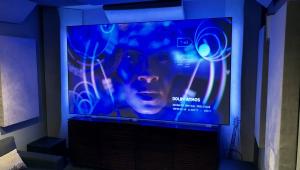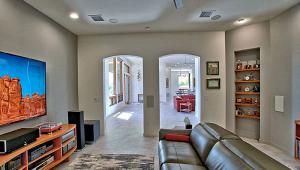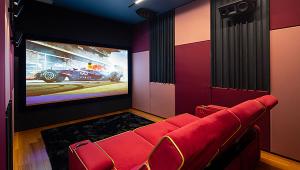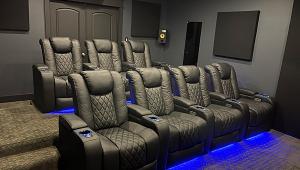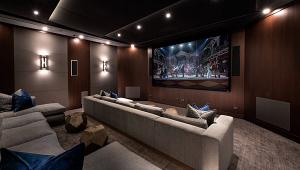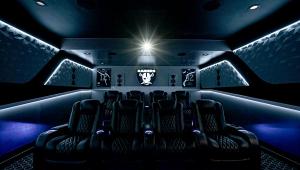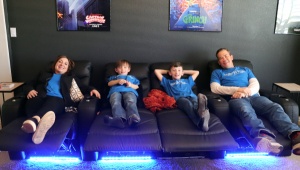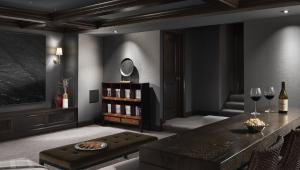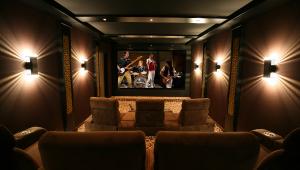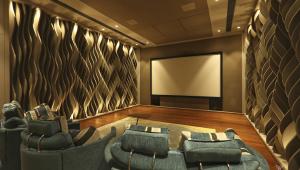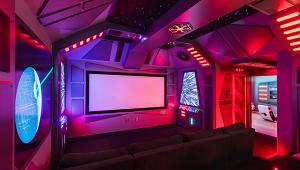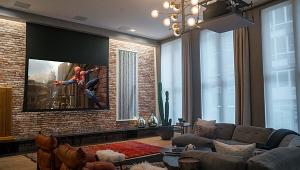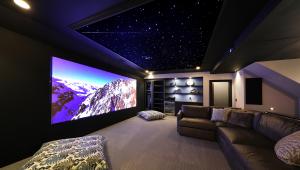The Viagra

Every high-end home theater installation presents its share of obstacles, but incorporating a theater into a family or living room, as opposed to a dedicated theater room, is often particularly challenging. Homeowners are usually more sensitive to the equipment's visibility and less willing—or able—to rearrange the room to accommodate ideal gear placement. The more unique the home design, the more challenging the install becomes, and it's up to the installer to do some creative problem solving.
Ambiance Systems (www.ambiancesystems.com), based in upper New York state, has spent the last 20 years figuring out creative ways to meet the needs of their clientele. The company has received several CEDIA Lifestyle Awards recognizing their ability to subtly integrate home theater systems into challenging environments. Ambiance president Marc Leidig recently told us about one particularly memorable job in a home on the shores of Long Island Sound.
"The client didn't have a dedicated theater room," Leidig explains. "He wanted to put the theater in the family room, which was the primary relaxation area." This space presented a number of challenges, not the least of which was its size. The room had a long, open design, with the large family room flowing directly into the dining room. The right wall consisted almost entirely of glass windows and doors for gazing at the waterfront—an acoustic challenge to be sure. These are common issues for the custom installer, but there was one obstacle that required some truly innovative thinking: where to mount the Sony VPH-50 CRT projector.
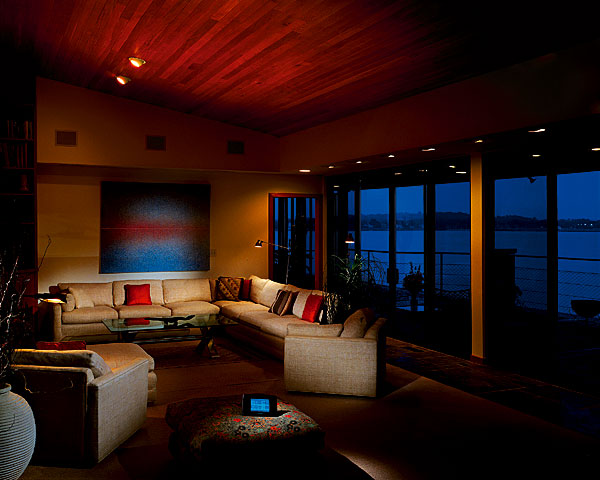
The room's vaulted wood ceilings were off limits, as the homeowner absolutely did not want to drill into them. He also didn't want to interfere with the open floor plan with a tabletop or floor-lift solution. That left the dining room as the only option; however, mounting the projector on the available wall in the dining room would create an image size far too large for the 120-inch Stewart screen. . .and for the entire wall on which it resided!
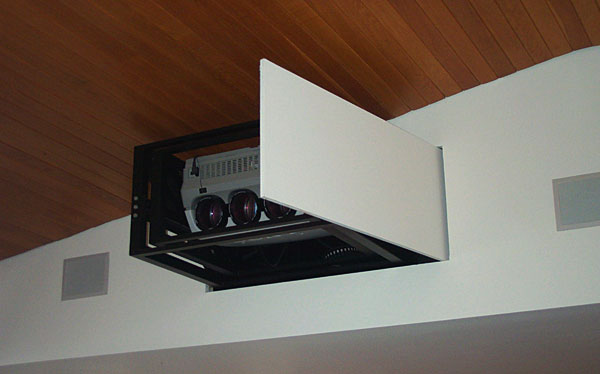
After some brainstorming, the Ambiance team decided that a telescopic projector mount was the best solution. They asked their fabricator, Electro-Kinetics (www.electrokinetics.com), to build a motorized mechanism that would extend 13 feet into the room. During the 12 weeks it took to build the mechanism, which would perfectly accommodate the Sony projector's dimensions, the Ambiance team embarked on the task of installing a soffit at the front of the room in which to house the retractable screen and front speakers. An existing soffit along the right wall allowed them to run the necessary wiring around the room's perimeter. Since the adjacent dining room had a flat ceiling, a perfect attic space was available to house the projector and mechanism on the side of the living room opposite the screen area.
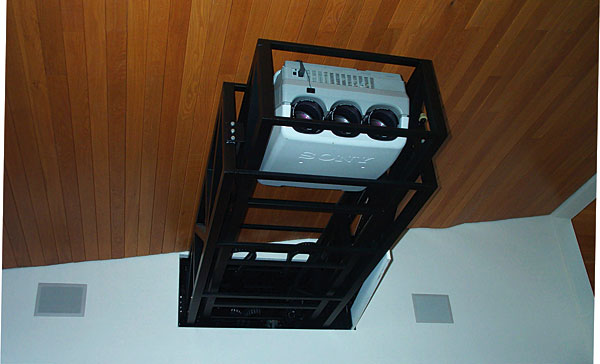
Needless to say, installing the mount was a challenge in and of itself. "It's a mechanism nested within a mechanism nested within a cage," Leidig says. "This thing was about 10 feet long and made of steel." That meant they first had to reinforce the solitary beam that provides the ceiling support in the dining area. "Our carpenter had to reinforce it because there would be a lot of torque on [the beam] where the mount was installed." Step two involved bolting the mount's sleeve into the attic space above, then putting the mechanism into place. It took four ladders and six or seven guys to raise the mount up to the 9-foot-high ceiling level. "Let's just say it was a long day," Marc laughs.
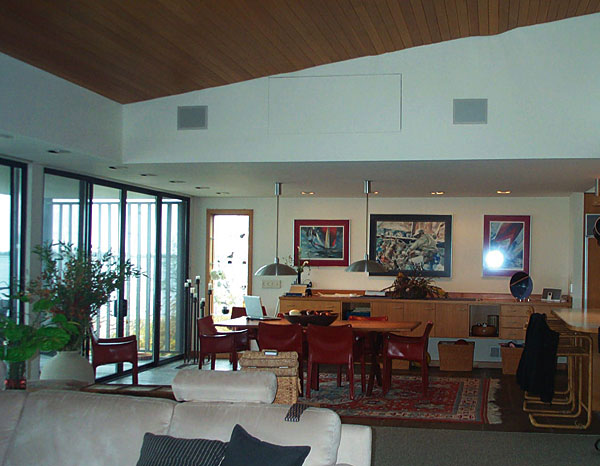
It's hard to believe you can actually hide such a huge piece of machinery, but the Ambiance team did just that. When retracted, the entire mechanism resides behind a white, rectangular door. A high-torque, rack-and-pinion motor pushes the projector/mount combo through that door and slowly moves it to its desired position. The low-speed motor doesn't generate much noise, and it takes between one and two minutes for the projector to get from rest to full extension. Ambiance incorporated the action into the automated Crestron control system that also lowers the screen and shades and cues up the gear. "For the sake of pure sexiness, we went back and made sure that everything hit its end point at the exact same time," Leidig says.
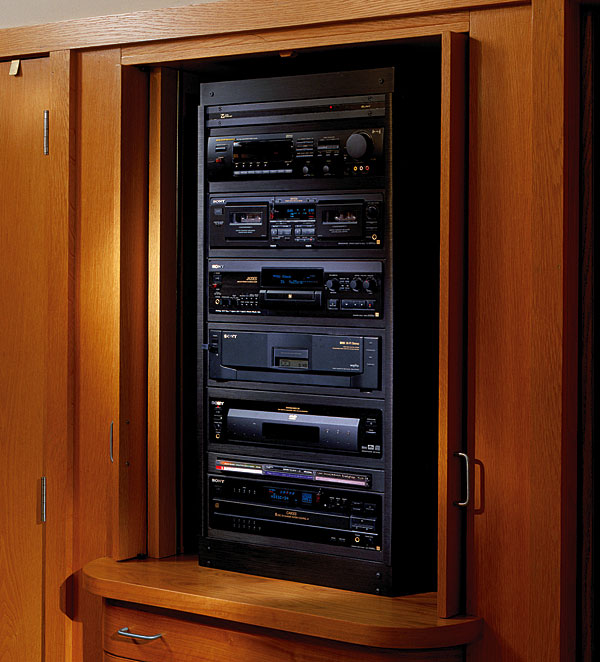
And what was the client's reaction to the team's creative solution? "He was absolutely thrilled," Leidig answers. "He's an innovative thinker who marches to the beat of his own drum, so this was great for him." He even gave his new home theater an apt name: The Viagra.

As memorable as this installation was, it's just one of many that Leidig has been involved with over his career. "I'd say five percent of our jobs throw us a real zinger and make things really fun and refreshing. I no longer say, 'We'll never top that.' Every year, someone has a request that tops the last one. That's what I love about this industry."
How It Works For You
Choose Your Projector Wisely: Projector placement is always a concern, especially if you want to use it in a family or living room where your options are even more limited. Many newer projectors include features like vertical and/or horizontal lens shift, zoom, and keystone correction that make it easier to center the image on your screen from a wider variety of locations. If you have a specific placement in mind, make sure to do your homework before you buy: Measure the distance and angles from the screen to your desired projector location, and research a projector's throw distance and angles, as well as its image-shifting features.
Motoring: Don't want to see your projector when it's not in use? Companies like Draper (www.draperinc.com), Da-Lite (www.da-lite.com), and Lift-Tech (www.televisionlifts.com) offer motorized projector mounts that lower the projector from the ceiling.
It Never Hurts to Ask: If you've encountered a similar obstacle in your home theater install, consider bringing in an installer to offer some creative solutions. The answer may be easier—and less expensive—than you think.
- Log in or register to post comments
